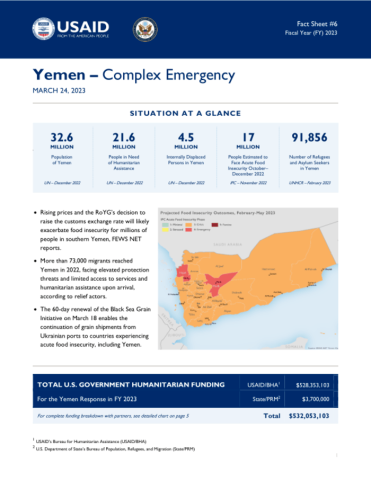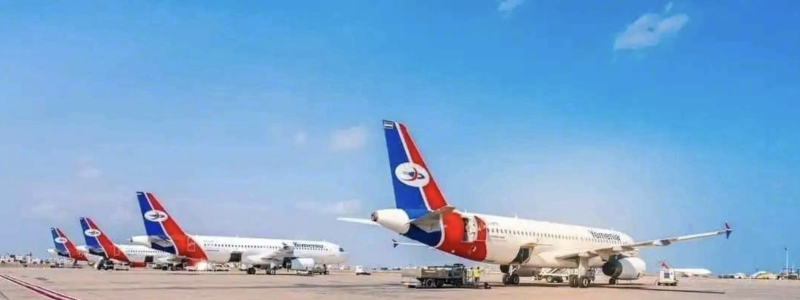WFP Yemen Food Security Update, October 2022


Highlights
The local currency exchange rate in IRG-controlled areas fluctuated around similar levels of the previous month. However, the rial lost 19 percent of its value against the US dollar since mid-April. Meanwhile, the local currency in areas under Sana’a-based authorities remained stable at around YER 558/USD since the announced truce in April. External financial support is needed for Yemen to keep up with the demand for essential food imports and to address the crucial social spending needs (IMF, Oct 2022).
Fuel imports through Red Sea ports are up by 259 percent during the first three quarters of 2022 compared to the same period last year. Thanks to the truce, the flow of imported fuel through Red Sea ports during Apr-Sep 2022 was nearly five times the level of the corresponding period in 2021.
Local prices of petrol and diesel decreased countrywide compared to August.
This is mainly due to the truce-related fuel supply improvement and the continued decrease in the global prices of fuel. Nonetheless, the pumping prices for both petrol and diesel were one-and-half their levels in September 2021 across the southern governorates, while they increased by five percent for petrol and 15 percent for diesel in the north.
During the first three quarters of 2022, the overall food imports through Al Hodeidah and Salif ports were seven percent higher than their levels in the same period last year. Nonetheless, this increase could not make up for the 44 percent decline observed through the southern ports of Aden and Mukalla.
In September, the global FAO Food Price Index decreased for the sixth consecutive month. It is down by 15 percent since the all-time high of March 2022. This drop was mainly driven by the sharp fall in global price indices of vegetable oils and cereals, down by 39 and 13 percent respectively since then.
However, global food prices remained five percent higher than their levels in the last year.
WFP faced critical shortages in funding and food stocks, leading to reduced food rations throughout 2022, particularly during the fourth cycle. From the fifth cycle onwards, WFP targets 13 million people with a food ration amount to 65 percent of the standard food basket, providing around 1,100 Kcal per person per day.
The cost of the minimum food basket slightly decreased month-on-month across the country, while remaining year-on-year up by 42 percent in IRGcontrolled areas and 27 percent in areas under Sana’a-based authorities. High local food prices continued to be reported as a main impediment for adequate diets in September by 20 percent of households in southern governorates and 10 percent across the north.
Food insecurity remained at elevated levels in September. More than half of the surveyed households (56 percent) in IRG-controlled areas and 48 percent in areas under Sana’a-based authorities indicated lacking access to adequate food. This represents a yearly increase of around 22 percent in both areas. In 16 out of the 22 governorates, the proportion of households reporting inadequate food consumption exceeded the “very high” threshold of ≥40 percent.

Paris — The French humanitarian organization Acted announced that it has delivered cash assistance to nearly 89,000 people affected by displa…

Sana’a — Fuel and food imports into ports under the control of Yemen’s Houthi movement on the Red Sea have continued to fall for…

ADEN — Yemen Airways, the country’s national carrier, announced it will resume flights between Aden and Abu Dhabi beginning in January…